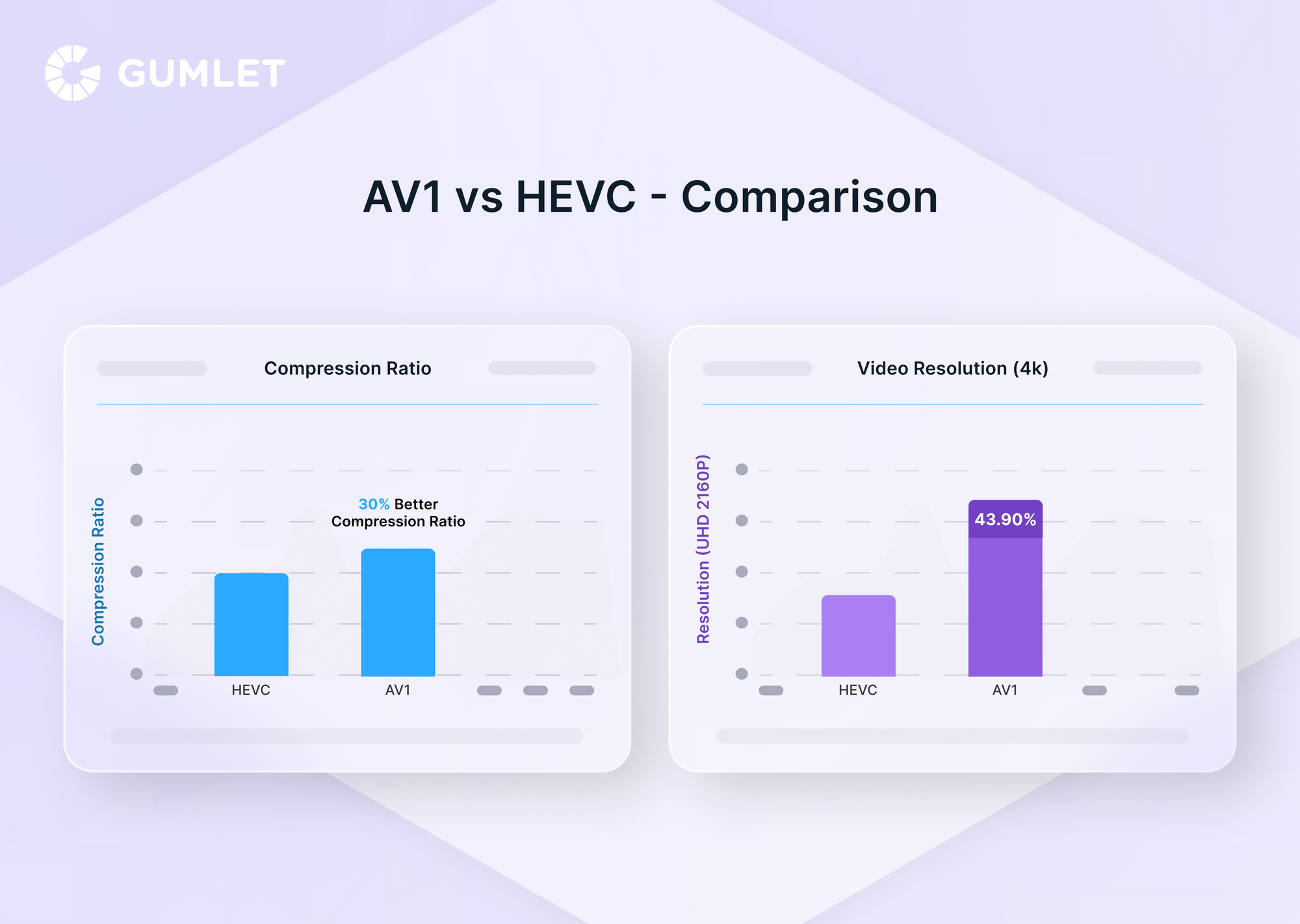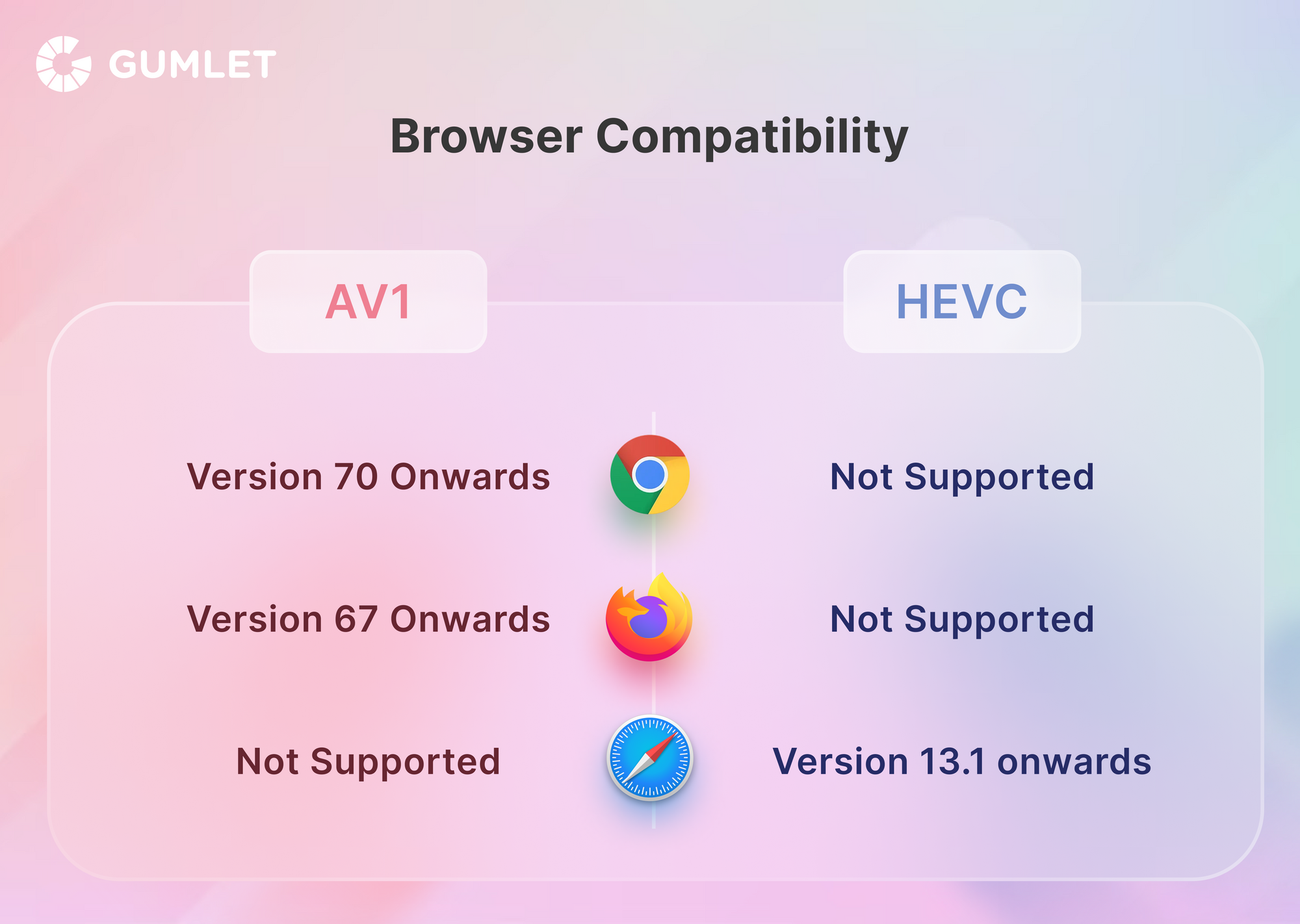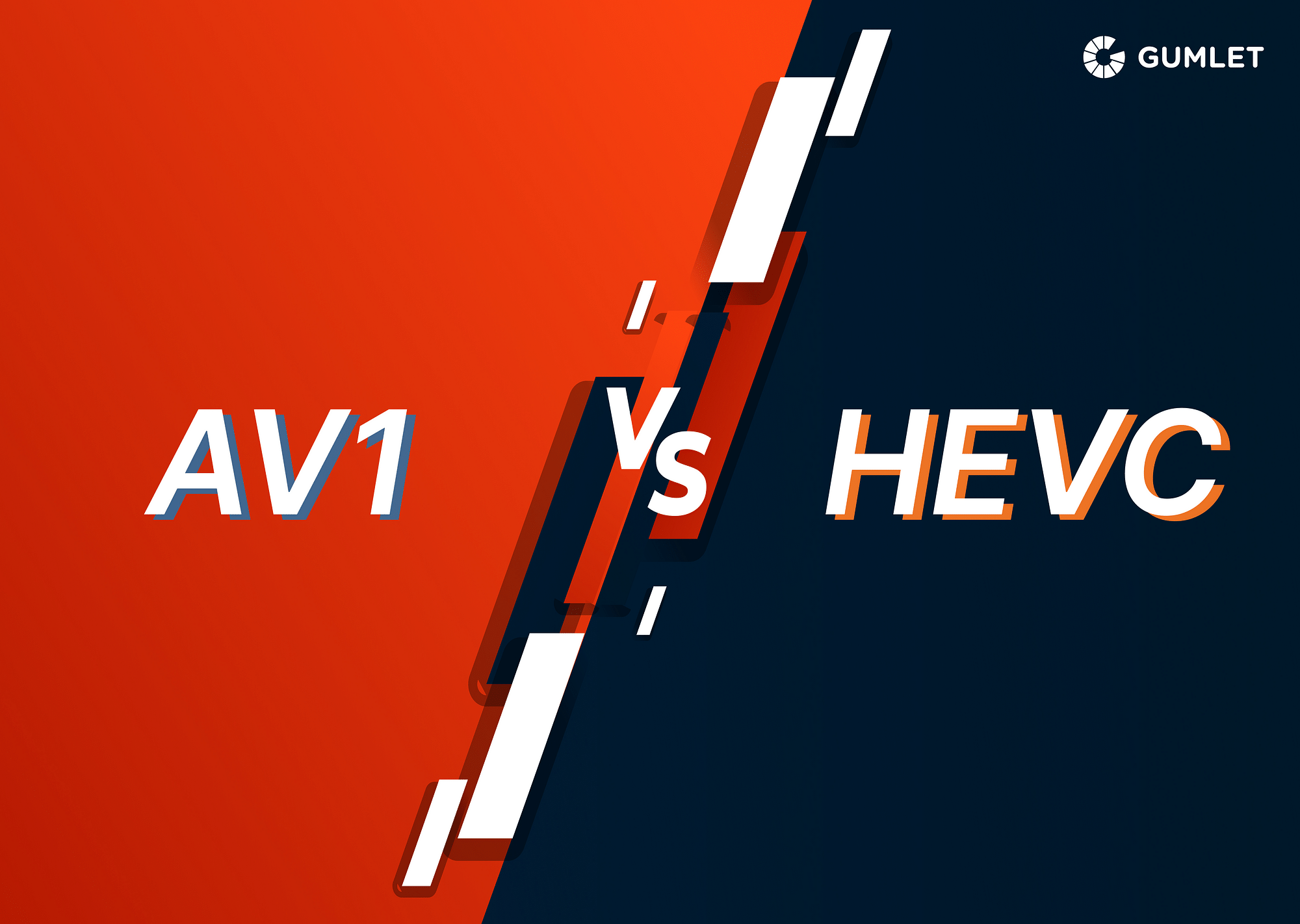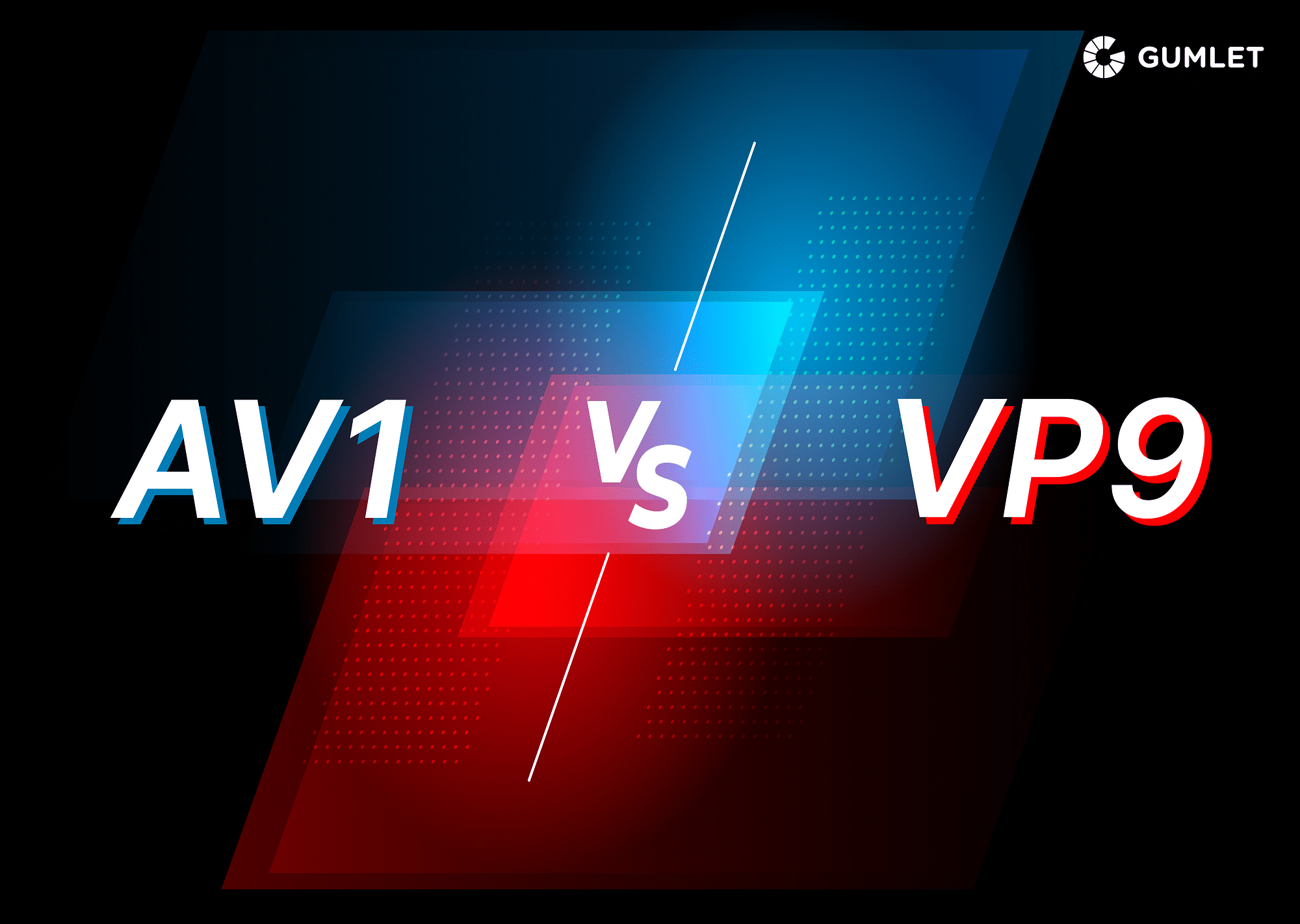As video resolution standards continue to increase, the demand for efficient video codecs has become more critical than ever. The selection of the right codec is paramount in delivering high-quality video content at lower bandwidth rates, and in 2023, two of the most commonly used codecs are AV1 and HEVC.
Both codecs offer a range of advantages in video compression, quality, and compatibility with devices. In this blog post, we will compare AV1 and HEVC and examine the strengths and weaknesses of each codec and their impact on video streaming.
What is AV1 Codec?
AOMedia Video 1 (AV1) is a non-licensable, open-source video codec developed and launched by the Alliance for Open Media in 2018. The algorithm is royalty-free and available for use worldwide.
Considered a successor to previous video codecs, AV1 is widely used for compressing 4K and 8K videos without compromising on visual quality. Its innovative compression techniques provide users with excellent streaming quality while saving on bandwidth costs.
What is HEVC Codec?
HEVC/H.265 is a popular video codec developed by ISO/IEC MPEG and ITU-T VCEG and released to the public in 2013. Unlike AV1, the HEVC standard has a complex licensing structure and is not free to use.
Despite this, several major streaming platforms, such as Netflix, Amazon, and Hulu, have been using HEVC for a long time, including video content streamed at 1080p resolution.

Difference Between AV1 vs HEVC
Here are the primary differentiating features between the AV1 and HEVC standards:
| Features | AV1 | HEVC |
|---|---|---|
| Introduction year | 2018 | 2013 |
| Video Quality | Better Video Quality | Not as good as AV1 |
| Compression Ratio | Higher | Lower |
| Encoding Time/ Efficiency | Slower | Faster |
| Performance Speed | About 50-200 times slower than both HEVC and VP9 standards. | Offers better performance speed due to less complex codec algorithms |
| Hardware/Software Support | Limited Hardware support; Requires latest hardware. It has superior software support. |
Has more widespread hardware support. Less software support due to strict licensing. |
| Container Format | WebM | MKV, MPEG MP4 |
| Royalty Fee | Royalty-free | Requires licensing fee |
| File Size | Smaller | Greater |
| Adaptive Streaming | Better | Good |
| Open-Source | Yes | No |
Here is a summary of the HEVC vs AV1 comparison based on the above parameters:
Quality
Numerous tests have been conducted to evaluate which codec offers better video quality. According to a recent MSU Codec Comparison report, AV1 is currently the leading codec in video quality, providing the same apparent visual quality while consuming 12% less data than H.265 (HEVC). Another study by Bitmovin confirms these findings, concluding that AV1's video quality was superior to HEVC and VP9 codec when played at the same bitrate settings.
Compression Ratio
AV1 demonstrates a 30% better compression ratio compared to HEVC and VP9. At higher resolutions like UHD 2160P, AV1 can outperform HEVC by a significant margin of 43.90%. Similarly, at 720p, the AV1 codec outperforms HEVC by 37.81%. AV1 even outperforms HEVC in reducing bitrates for Facebook videos, with a remarkable 50% reduction compared to its primary competitor. These results indicate that AV1 can deliver the same level of video quality as HEVC and VP9 but with smaller file sizes and lower bitrates, making it a promising and increasingly popular codec for video streaming services.
Encoding Efficiency
Several tests have shown that AV1 takes approximately three times longer to encode video than the HEVC/H.265 standard. While AV1's encoding time is still slower than other codecs, significant improvements have been made with the release of AOM-AV1 3.5, resulting in a reduction of at least 34% in encoding time. In contrast, HEVC has a less complex encoding/decoding algorithm, resulting in a faster and more efficient performance for CPUs and batteries. This efficiency makes HEVC popular for commercial streaming services that prioritize playback performance and battery life.
Performance Speed
AV1 has been reported to be one of the slowest codecs available, with some estimates suggesting it is 2500-3000 times slower than its competitors. Currently, AV1 lags behind HEVC significantly, taking around 100 seconds to encode a single frame of any 4K video. Despite its slower encoding speed, AV1 has gained traction due to its superior compression efficiency, which allows for higher-quality video at lower bitrates. As such, AV1 is becoming increasingly popular among streaming services and device manufacturers, who are willing to sacrifice encoding speed for improved video quality and bandwidth efficiency.
Hardware/Software Support
Since AV1 is royalty-free, most major platforms support it; All the major Android tablets and phones support AV1, Netflix uses AV1 for mobile streaming, and both NVIDIA and Discord are in the process of extending support for AV1. However, because of its complex encoding/decoding process, hardware compatibility is still an issue with AV1.
Meanwhile, HEVC has become a dominant standard in hardware due to its impressive hardware compatibility. Almost all recent hardware releases over the past few years can comfortably support this standard. On the software end, the software industry is currently dominated by AV1 due to the complex licensing structure of HEVC.
Container Format
AV1 simply uses WEBM, which was developed by Google. That ensures high-quality streaming while also supporting HTML5 web video and audio elements efficiently. H.265, on the other hand, is more inclined toward using MKV and MPEG MP4 formats.
Royalty Fee
HEVC is not open-source. It's strictly royalty-based, and it has a very complicated licensing structure. That is because all the joint shareholders from MPEG LA, Velos Media, and HEVC Advance, have separate licensing fees, making the whole ordeal really complex for users. AV1 was launched as a solution to HEVC's dubious licensing structure. As such, the Alliance for Open Media consortium decided to make HEVC completely open-source and royalty-free.
File Size
AV1 is superior to HEVC in terms of file size, offering better compressibility by 34%. This indicates that AV1 can compress videos to file sizes that are 30% lower than HEVC while maintaining the same apparent visual quality.
Compare your current transcoding levels against Gumlet's advanced per-title-encoding.
AV1 vs. HEVC: Which One is Better?
With a 30% increase in overall performance, robust compressibility, and better video quality at the same bit rate, it is clear that AV1 is a superior choice for content creators and viewers alike. AV1 represents a significant leap forward in video codec technology, offering numerous advantages over its predecessor, HEVC.
While some minor issues still need to be addressed, such as compatibility and encoding efficiency, it is undeniable that AV1 is the future of video codec technology. Its many benefits make it the clear choice for those looking to stay ahead of the curve in video production.

Overview of AV1
Here are some granular insights into the promising AV1 video codec:
Pros and Cons of AV1
Pros:
- AV1 is open-source and completely free of any royalties.
- It offers a bitrate reduction of up to 50%, delivering exceptional quality videos while consuming a comparatively lesser data rate.
- It has significantly reduced bandwidth costs.
- AV1 can support viable container formats like MP4, 3GP, and MKV.
- AV1 offers 30% better performance than HEVC.
Cons:
- The AV1 codec is one of the slowest in terms of encoding/decoding efficiencies and performance speed.
- Hardware compatibility is an issue for supporting AV1 codec because of its complex encoding processes.
Applications of AV1
AV1 is currently one of the best video codecs available and offers significant improvements over many of its predecessors. Here are the broad applications of the AV1 codec on the global landscape:
- On-Demand Streaming: Netflix has adopted AV1 as the more efficient video codec for streaming high-resolution, 4K titles, making it widely used in delivering on-demand streaming services. They have introduced the AV1 codec on Smart TVs, and Google has included AV1 on their browser and YouTube to drive huge traffic. Microsoft also offers codec support, and Apple is making developments to support AV1's latest standards.
- Online Video Streaming: AV1 is the preferred choice for online video streaming because it delivers high-quality video content with better compression efficiency. It also increases gaming FPS as the Graphic Processing Unit faces no interruptions while processing streams. Major video streaming platforms like YouTube, Netflix, and Vimeo already use AV1.
- Virtual Reality: Virtual reality (VR) is becoming increasingly popular, and the demand for high-quality VR content is on the rise. AV1 can help deliver high-quality VR content with low latency, making it ideal for immersive experiences
- Video Conferencing: With the increase in remote work and video conferencing, AV1 can help provide high-quality video conferencing experiences even with low bandwidth. AV1's high compression efficiency and low bit rate can help deliver high-quality video with low latency, making it ideal for video conferencing applications.
Best AV1 Converters
AV1 is less widely supported than HEVC. But that’s where a quality AV1 converter can help you. Here are the top three options you could explore:
1. VideoProc Converter:
VideoProc offers users customizable features, like video resolution, bitrate, and frame rate conversion, for a long-standing player in the video conversion game.
2. Convertio:
Converio is an online video converter that can decode AOM AV1 videos to either H.264 or HEVC and is both simple and free to use. It requires no need to register on the website to gain access to its features.
3. FFmpeg:
FFmpeg is an open-source transcoding platform designed for professionals and tech enthusiasts, supporting AV1 since V4.4. It has high compatibility with different hardware and software, allowing it to run on virtually any system.
Conclusion
As the demand for video content continues to rise, it is becoming increasingly clear that AV1 will play a major role in shaping the industry. The development of AV1 has addressed many of the limitations of the traditional HEVC standard and has improved overall performance by around 30%. While HEVC has yet to be eradicated entirely, AV1 is making significant strides toward becoming the most widely-used and superior video codec globally. For those seeking the best possible video experience, AV1 is a clear choice.
FAQs
1. Is AV1 better quality?
AV1 is widely regarded as the gold standard in video formats. It claims superior efficiency and quality compared to other widely used video codecs. AV1 was found to be 30% more efficient than H.265. AV1 works with nearly all browsers on windows and Linux. It provides not only the best video quality but also smaller file sizes.
2. Can AV1 be lossless?
Although AV1 is made primarily for lossy encoding, the codec also supports lossless compression.
3. What codecs are better than AV1?
While some codecs offer specific advantages in certain use cases, such as H.264 for compatibility and H.265 for hardware acceleration, AV1 generally outperforms other codecs in terms of overall video quality and compression efficiency, making it a top choice for many content creators and video professionals.
4. Is AV1 better than H.265?
In test experiments conducted, AV1 was found to be 30% more efficient than H.265. AV1 can outperform H265 where encoding and decoding efficiency is concerned. AV1 can also send streams faster and in a more economically feasible way while allowing viewers to enjoy high-definition videos at the same bandwidth.




